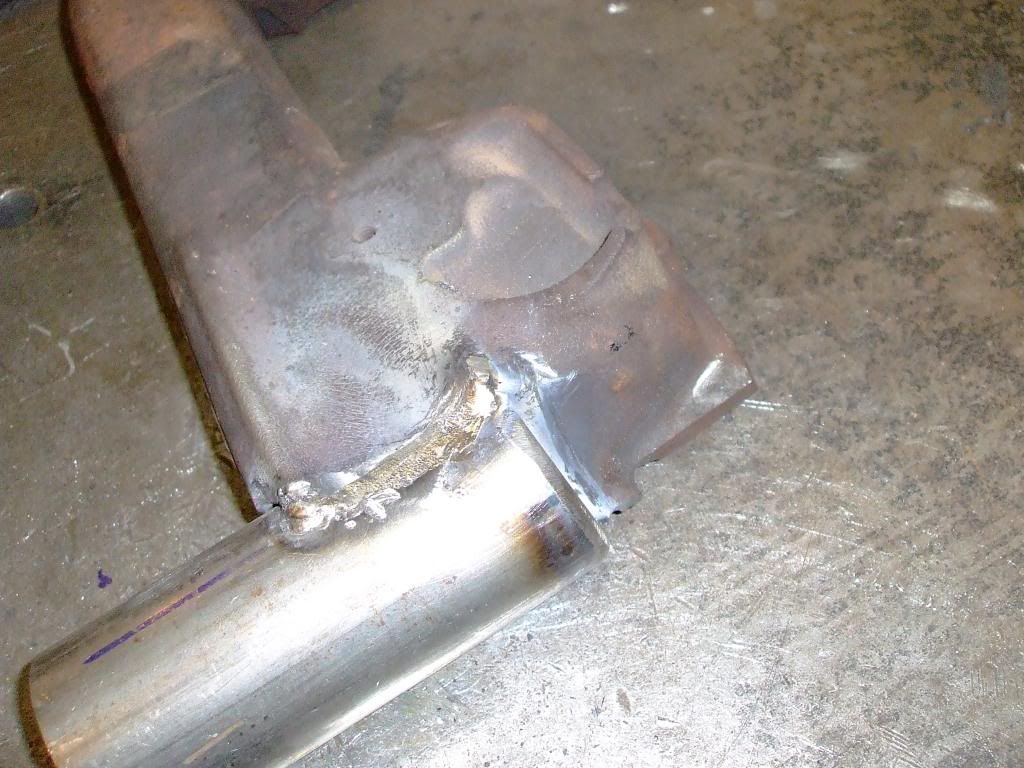if it cracks it wont be along the weld but somewhere near.
I had a ford 460 block that had a hidden crack show up after it had already had the #1 main cap re-fitted and the crank line honed and the block bored and honed.
It was a tiny little crack in the drivers side upper water pump bolt hole. that's what happens when someone who just doesn't care runs a bolt into a blind hole full of dirt and grease.
The cost for a section repair was throw it away and get another one. there was no-one to do it here and I think the guys I called either didn't want to mess with it or they really were worth $500 an hour.
I have a friend who was a maintenance engineer at Loziers. he told me they have to weld castings on drop hammer forges. he told me heat it up as much as I can, grind it all out. get a good root, and don't weld more than an inch before you ping it as it cools to relieve the stresses.
I did notice the carbon when I was fishing for some good steel to weld to. It was in granular inclusions in the grain you just had to burn it out and back off before you melted in deep enough to hit the next pocket.
when I started grinding into the crack it spider webbed into the block requiring half the water pump boss to be ground away leaving a golfball sized hole in the block you could see the cylinder lining through.
It took some long and tedious welding to build it back up but as far as machining goes i just worked it out with a couple small grinders and finished off the gasket face with a hand file.
The welding arc is hot but the block is not. the key is to not let that weld heat get into the block, let it dissipate while you ping the weld.
Another thing that might have helped is i did not weld along a straight line.
The area I ground out looked like I was going to do a fiberglass section repair to a fiberglass body part.
Cast iron manifolds routinely get to 1200, 1400 degrees. turbo manifolds require a special alloy.
I had a mack truck that had burned the carbon out of the dividing web between the 2 turbo ports and what was left looked like steel sponge.
The quality of the cast makes a big difference just because something was cast doesn't dictate whether it's iron or steel
The carbon content dictates if it's iron or steel.
once the carbon content in steel reaches a certain point it is classified as cast.
Don't let the term carbon steel fool you, steel has lower carbon than iron.
Some parts like steering knuckles and some connecting rods are actually cast steel
Somewhere on here I posted a detailed article on the different types of ferrous alloys
What he said about doing a cast iron section repair is correct. the suppliers of new parts to the automobile industry do section repairs on brand new parts with casting flaws.
But if there's no-one around to do it or the guy you do find wants to drink beer for a year off the job what else are you going to do?

































